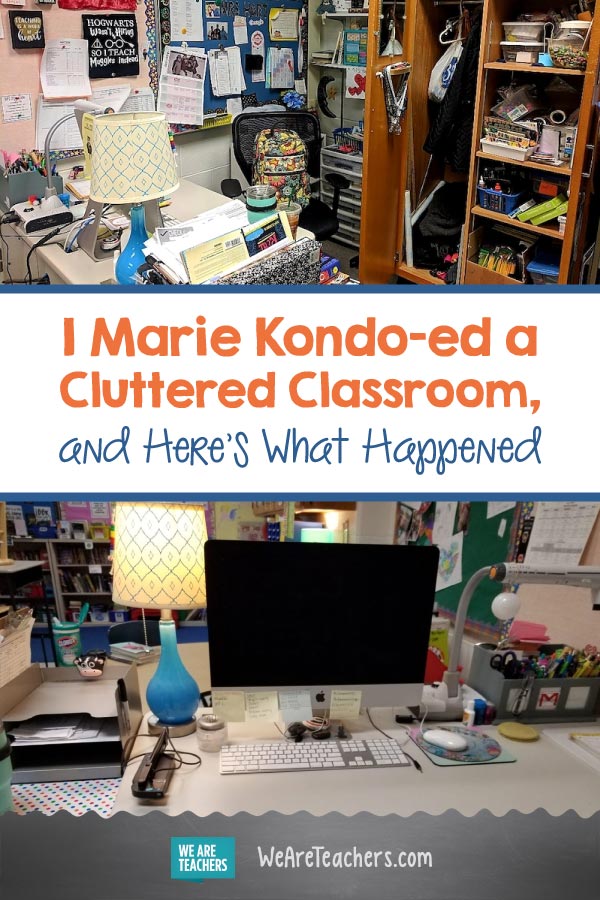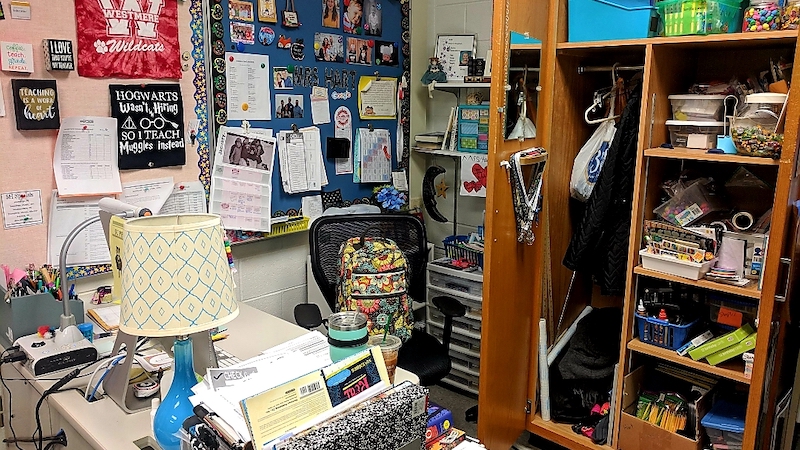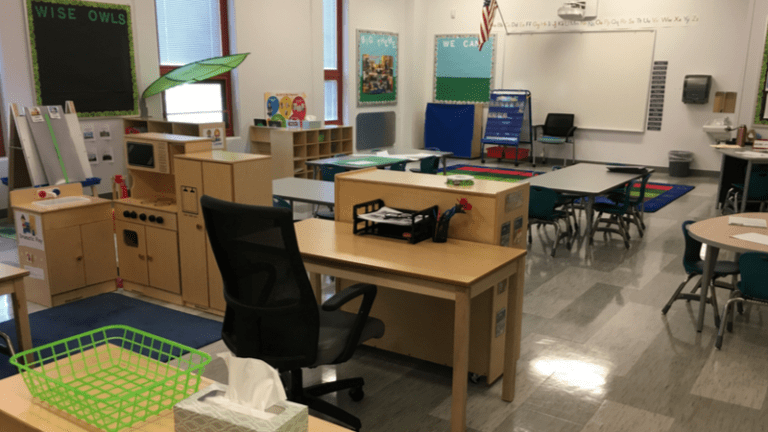It seems as though almost everyone is decluttering and organizing their homes, thanks to Marie Kondo and her books and Netflix series about The Life-Changing Magic of Tidying Up.
For teachers and their students, the classroom is a home away from home. And what classroom couldn’t use a little tidying up? But what teacher has the time or energy to follow Kondo’s mindful, systematic approach? To hold every book, every piece of paper and curriculum and decide whether it “sparks joy”? What teacher finds discarding things easy? And, most horrifyingly, who gets rid of books?!
As a former teacher and current children’s book author, I understand the difficulty, the doubts. However, as a KonMari fan since 2013, I was also convinced that “Kondo-ing” a classroom would make a positive difference! But I didn’t have my own classroom to try the “life-changing magic” on.
Meet my guinea pig.
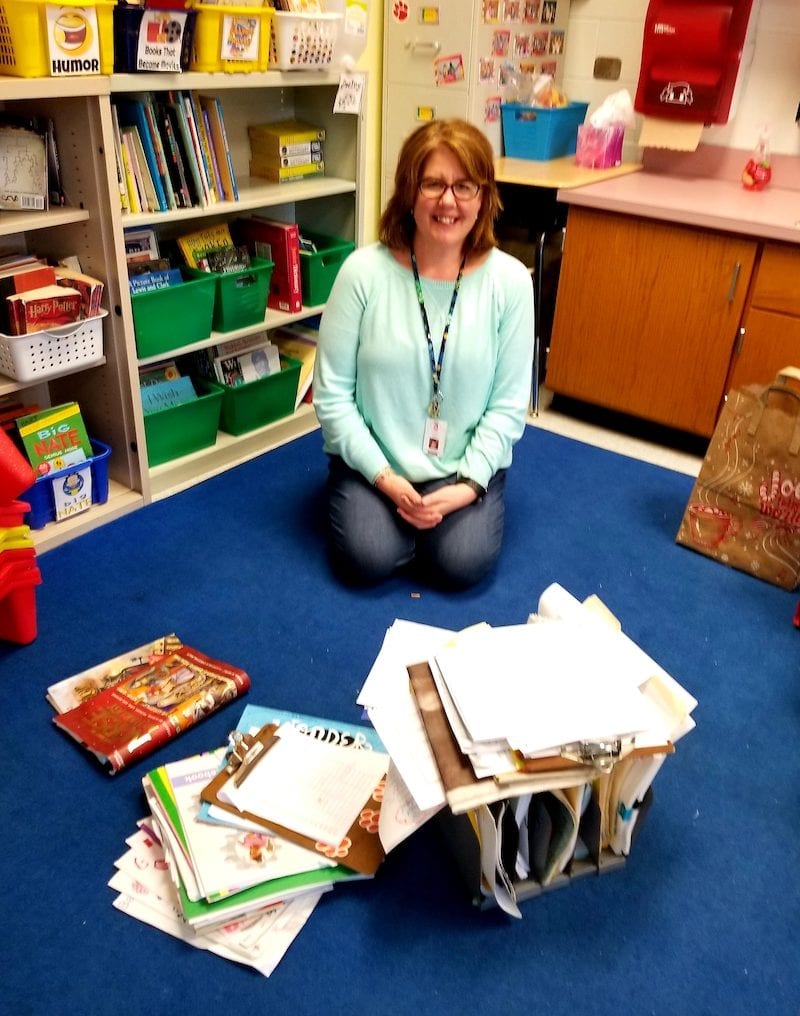
Enter Cheri Hart, fifth grade teacher at Westmere Elementary in Guilderland, New York. I had only met Cheri through Twitter. But her school was only a few miles away from my home, and she was obviously a creative and enthusiastic teacher, so I approached her with my idea.
Not without apprehension, Cheri agreed to be my classroom Kondo guinea pig! However, neither of us could give too much time to do it, certainly not the weeks or months Kondo’s clients typically take. We would have one Friday afternoon, between the final bell and dinner time.
Would a two-and-a-half hour “Kondofy” help at all? Was it even possible? Would the results “magically” alter anything for Cheri and her students?
[contextly_auto_sidebar]
Here’s what happened.
Greet and Gratitude
We started by sitting and silently thanking the room for everything it had given to teachers and children thus far.
Envision
I asked Cheri, “How does your classroom feel right now? How would you like it to look? To feel?”
She said, “It feels happy but too overstimulating. Way too crowded. I’d like it to look less busy and to feel like there was more space for everyone and better flow.”
Declutter by Category
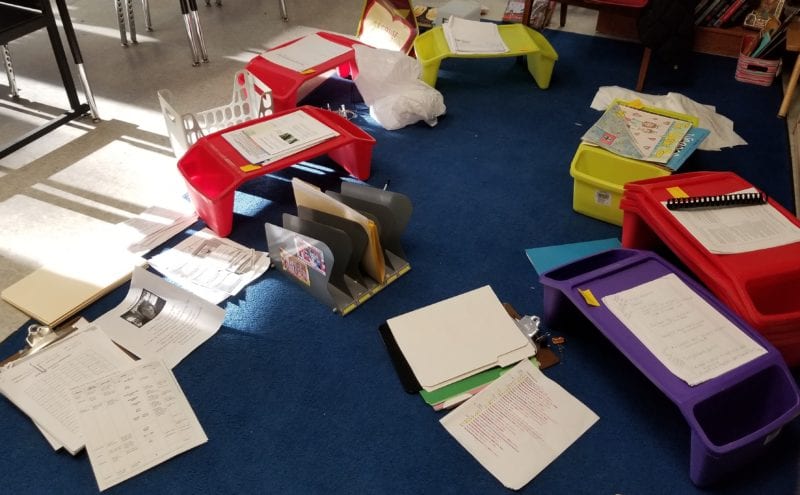
In a home, Marie Kondo starts with clothes, but that wasn’t applicable in the classroom. Kondo’s next category was books—Cheri almost hyperventilated at the mere thought of choosing which books should stay or go. So, we quickly agreed that the books were to be classified as “sentimental items”—the category Kondo saves for last. We would begin with papers.
“I have papers everywhere,” Cheri told me. “I think I have stuff from around 2002!”
We hit every corner of the classroom, gathering everything that could qualify to be in the paper category—student work, teaching manuals and materials, notebooks, workbooks, handouts, notes. Then we piled it ALL onto the reading rug. It was an intimidating mountain, but Cheri bravely forged on.
Discard
Cheri held each paper, one by one. If it had served its purpose and was no longer needed, Cheri followed Kondo’s rule and said thank you and put it in the large recycling can borrowed from the custodian for the afternoon. If Cheri still needed or wanted it, she put the paper or paper item aside for the moment.
With coworkers and teacher friends drifting in and out to spectate, we worked on. As Cheri got used to making decisions, the pace sped up. Finally, everything that needed to be discarded was in the recycling bin.
Organize
Next, we had to find permanent “homes” for the remaining papers. Cheri had already designated places for different subjects, so following the Kondo rule “place like with like,” she put science, ELA, art paper, etc. in their respective bins, cabinets, or drawers. Where possible, I had Cheri store things vertically, which saves space and ensures things don’t get buried.
After Cheri put away those paper objects, there were still things left on the rug. They all fell under the category “to do.” To be returned to student, to be laminated, to discuss with …
I suggested that she keep them somewhere close to her teacher’s desk, so she could easily see what needed to be taken care of. We looked at her desk. It was … cluttered.
This is where I had an epiphany.
Looking around Mrs. Hart’s classroom, I had noticed and appreciated that she already had used many good organizational techniques in certain places, and those places were labeled and tidy. However, they were all for her students!
Cheri, like so many teachers and working moms, had put herself last.
We turned our focus to her desk and the surrounding area. We moved some things that she did not use or need or that belonged elsewhere. That cleared off the top of a cabinet—opening up a perfect spot for the “to do” papers! I had brought in a couple organizers—and the sturdy one that separated and held things vertically was ideal. Cheri labeled the new “to do” file and placed the papers within its dividers. “Now I can easily see what needs to be done and just do it,” said Cheri. “And if it gets too full, I won’t be able to ignore it.”
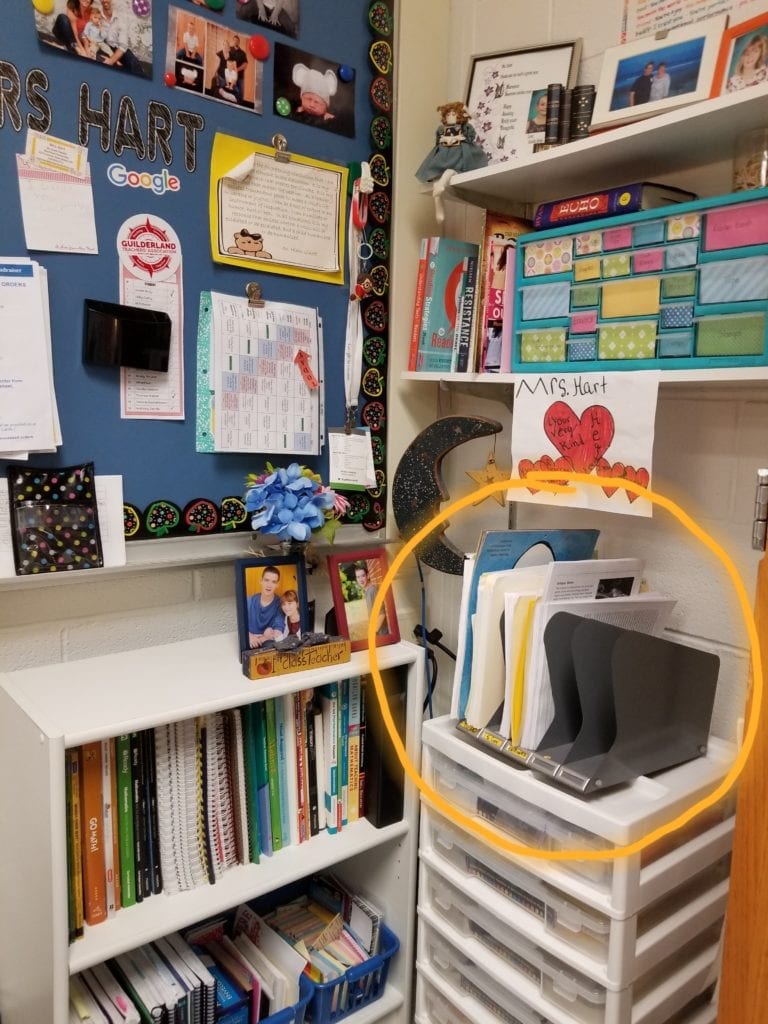
We cleared everything off her desk and only put back on what “sparked joy” and what was necessary. We went into her two desk drawers. One had files that she promised to tidy. The bottom one was filled with what Marie Kondo calls “Komono”—miscellaneous odds and ends. Cheri wanted it to hold her personal care items. Soon, after discarding and organizing, the drawer was neat, and it contained exactly what Cheri wanted nearby.
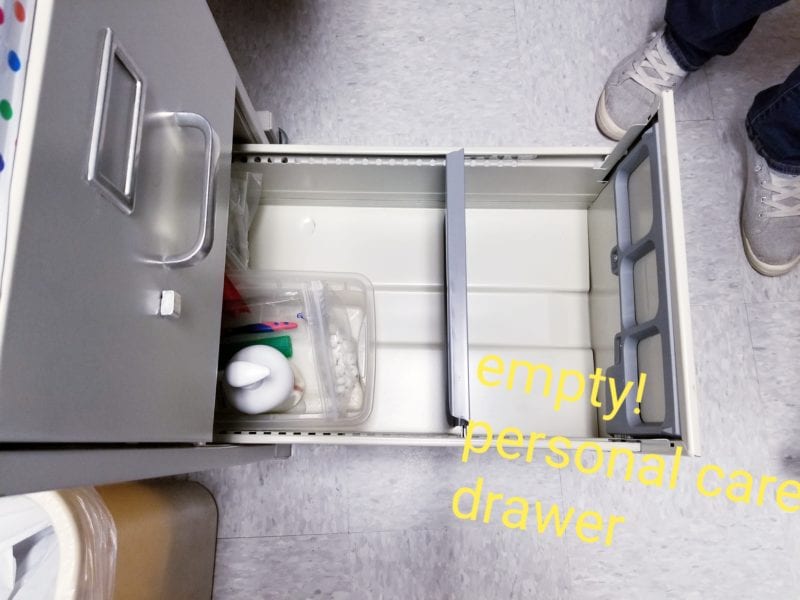
And time was up! Now … the results:
The stack papers Cheri discarded was 15 inches high in the large recycling bin! Her desk and its surroundings were tidy and personal! And so many things had found new homes—keeping “like with like,” so that she could remember where those things were.
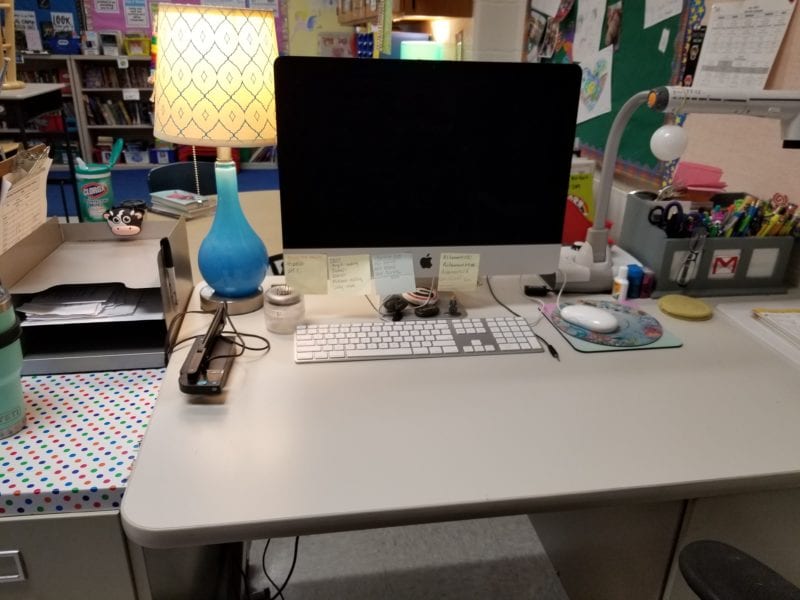
“This is awesome!” Cheri said. “Every morning, I come to my desk area, and my heart sinks a little, because it’s messy and overwhelming. I can’t wait until Monday! It’s going to feel so different!”
Cheri and I agreed that her classroom already looked neater, was more organized, felt more open, and had a “fresh, new energy.” Cheri’s teacher friends were wowed. And one former student stopped in and exclaimed, “Mrs. Hart! This is the first time I’ve seen your desk clean!”
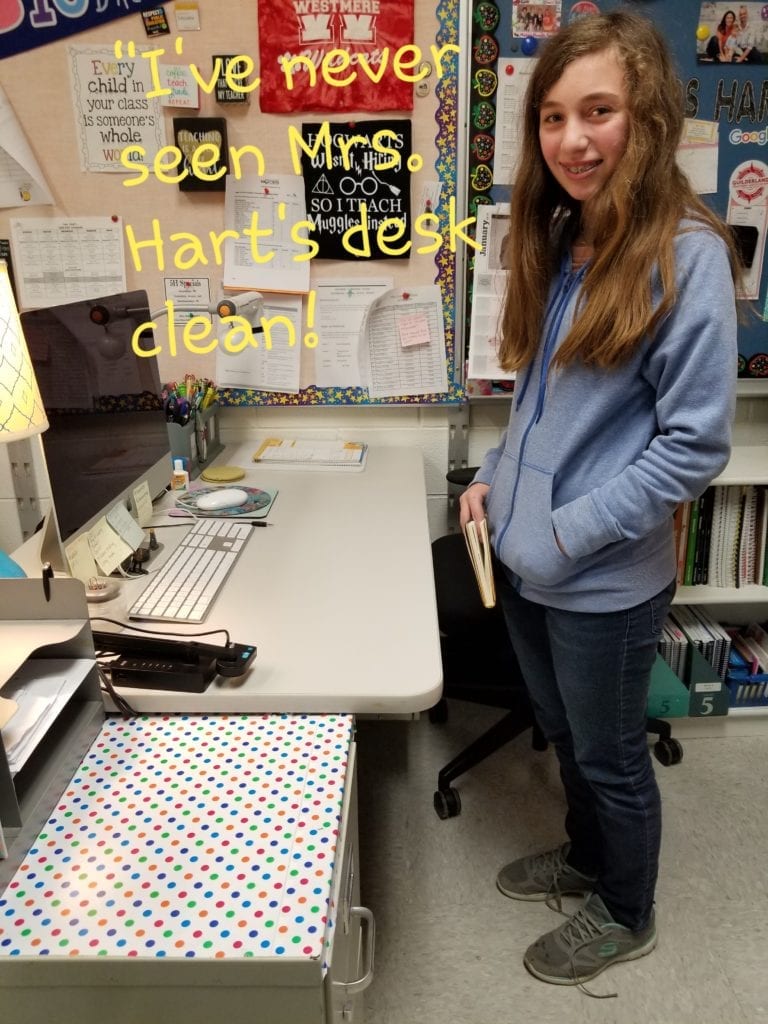
Cheri had done it. A shortened, modified “Kondofy” was enough to make magic!
Cheri asked for homework. So now that she knows the method, she will tackle her storage cabinets next! Then, maybe, books—or not. However, she decides what sparks joy in herself and her students, and she has a better sense of what works in her environment and the confidence to do it. What more could anyone ask for but a happy, organized home away from home?
What do you think? Have you tried to “Kondo” your classroom? Come and share your experiences in our WeAreTeachers Chat group on Facebook.
Plus, photos of teacher organization that will make you drool.
